11 Mar 2019
Sarah Caney details practical steps that can be passed on to clients to help their older feline pets maintain quality of life.

Figure 2. Thickened and overgrown nails are commonly seen in older cats. If left untrimmed, these can grow into the foot pads, causing pain.
Senior cats – those aged 11 years and older – benefit from closer attention to maintain health.
Regular preventive health care checks are useful in facilitating earlier diagnosis of illness, but attention to general care at home is also important to maintain quality of life. General care tips include advice on litter box provision, grooming, nail trimming and diet.
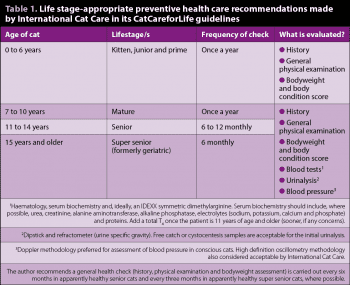
The author follows the CatCareforLife guidelines proposed by the charity International Cat Care (Table 1). These recommend senior cats have a preventive health care check – including blood, urinalysis and blood pressure assessment – every 6 to 12 months.
The author prefers to see super senior cats – those aged 15 years and older – every 3 months, if possible, checking blood pressure and urinalysis every 6 months, and blood profiles every 6 to 12 months.
Health questionnaires are useful in spotting any problems and teaching carers what signs to look out for (Table 2).
Carers should be encouraged to contact the clinic if they notice any change in their cat’s health or behaviour, however trivial they think this is.
The author is a keen advocate for all senior cats having access to an indoor litter box. Litter boxes are helpful for a number of reasons:
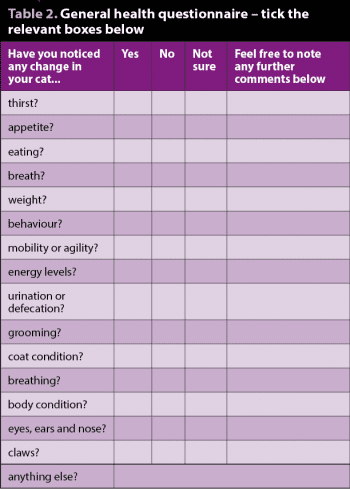
The litter box should be roomy (1.5 times the cat’s length from nose to tail base), easy to access (for example, having a low side), and placed in a quiet and private location (Figure 1).
The preferred substrate for most cats is a clumping sandy consistency litter, which is comfortable for them to stand on and easy to keep clean through scooping clumps and faeces at least twice a day. The tray should be completely emptied and cleaned at least once a week.
Carers should be urged to monitor the litter tray for changes in urination and defecation habits. Presence of blood in the urine or stools, altered consistency of stools, malodorous urine or any other changes should be reported to the veterinary clinic, if seen. The quantity and frequency of urination may also indicate a problem if it changes.
Carers should be advised to keep an eye on their cat’s nails. Elderly cats are less able to retract their claws and, if less active, may not “strop” their nails as frequently or effectively. This can easily lead to the nails becoming thickened and overgrown.
Overgrown nails can become snagged in furniture/carpets and may cause discomfort. In worst cases, the nails may grow into the food pad (Figure 2). Depending on the individual, regular trimming may be needed.
Older cats are less able to groom efficiently and may, therefore, benefit from grooming assistance at home. This may include wiping ocular and nasal discharges, and brushing the coat with a soft brush.
Care needs to be taken to ensure grooming is gentle in cats with poor body condition and those with painful underlying conditions, such as OA. Soft rubber grooming gloves (or even washing up gloves) can be used to massage the skin and coat, and remove loose hairs – elderly cats often love this. Attention to grooming can also help minimise hairball problems.
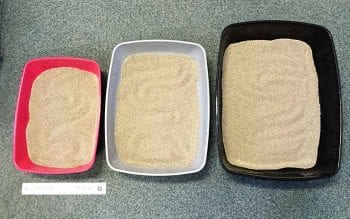
Dental disease is common, so it is sensible to warn owners about this possibility and advise them on signs that may be associated, such as gingivitis, halitosis, drooling, a “chattering” jaw, loss of appetite and pawing at the mouth.
OA is very common in senior and super senior cats, but can be difficult for a carer to spot since affected cats are not commonly lame and, often, the main changes are in their behaviour or lifestyle.
Mobility questionnaires (Table 3) help identify cats that may be suffering from mobility problems and/or chronic pain, and also serve as a way of educating carers on what signs to look out for. Support of cats with OA may include environmental advice and support in addition to, where indicated, joint supplements, mobility diets and analgesics.
Environmental advice might include:
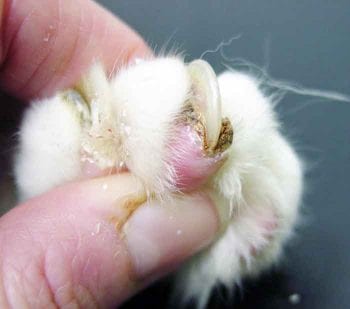
Cats aged older than 11 years are vulnerable to losing weight since they have a reduced sense of smell and taste, and a less efficient digestive system. Increasing the amount of food offered, preferably in the form of multiple small meals, may be all that is needed to maintain bodyweight. Offering very palatable diets may also help.
Monitoring of bodyweight and general condition is of enormous value in determining the most appropriate diet for an older cat – the ideal being to find a regime that maintains a healthy bodyweight and good health.
The dietary options available to apparently healthy older cats include:
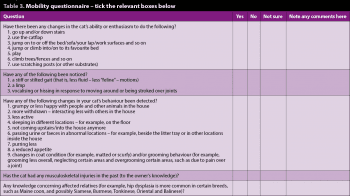
A fall in appetite is common in elderly cats. In those where the ability to digest fat and protein is reduced, this can lead to weight loss. Tips to offer owners to encourage appetite include:
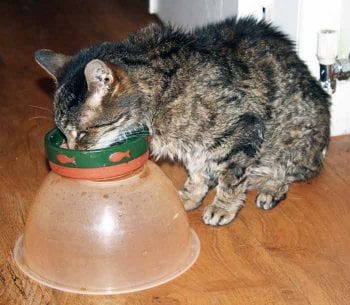
Avoid leaving uneaten wet food out for more than a couple of hours depending on the ambient temperature. Regularly replenish with fresh food in a clean bowl or saucer.
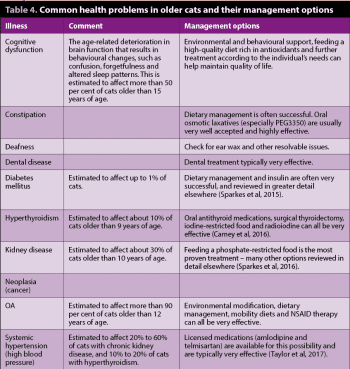
Elderly cats are more vulnerable to becoming dehydrated – especially if suffering from medical conditions such as kidney disease. Tactics to encourage regular/easy water intake are, therefore, encouraged and include:
Many common illnesses in elderly cats can be successfully managed with a good long-term outcome. Detailed discussion is beyond the scope of this article, but some summary data is presented in Table 4.
Successful elderly cat care requires attention to detail, but can often be rewarding for cat, clinician and carer alike. Simple home care tips can help maintain quality of life and are easy to adopt. Maintaining contact with elderly cats and their carers helps optimise health care through early detection of illness and appropriate interventions. Many conditions affecting elderly cats can be successfully treated with a good outcome.